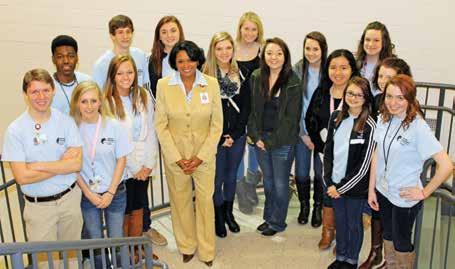engage
teach 21st-century learners collaborate
technology
This PAGE One column features technology-in-the-classroom advice from tech-savvy Georgia educators.
Technology in the Classroom:
Wading into Technology By Nick Zomer, Life Science Teacher at Mill Creek Middle School (Cherokee)
I
Nick Zomer, a seventhgrade life science teacher at Mill Creek Middle School in Woodstock, loves to experiment with technology, especially BYOT/BYLD. He holds a master’s degree in Education in Technology Integration in the Classroom from Walden University. Zomer is also a graduate of the PAGE Teacher Academy, where he is now an instructor, and has served as an ex-officio on the PAGE Board of Directors.
26 PAGE One
recently attended a professional learning event that was relevant and useful, at least until the last five minutes. That’s when the presenter dropped a buzzword that is flying through American schools: the flipped classroom. The problem wasn’t that he mentioned the concept, it was that he failed to explain it. “Flipping” the classroom means that students learn information outside of the traditional classroom, often through video tutorials. Class time is then devoted to enrichment or remediation. I have heard and read a lot about the flipped classroom, and I am eager to try it. However, I could tell by the puzzled looks and body language in the audience that I was in the minority. Rather than telling what it means to “flip” a classroom and explaining his journey into this process, the presenter simply trumpeted his success and encouraged others to follow. Devoid of understanding how and why to flip a classroom, audience members who otherwise may have embraced the concept were turned off. Technology integration cannot be a “do as I do” process. Teachers need to develop confidence through practice and support before transforming their classrooms. Rather than diving into the deep end at the beginning, I suggest that educators begin technology integration at a pace that allows them to gain sure footing.
Begin with the teaching, not the technology
When teachers begin learning a new technology, they often try to design an
entire lesson around it. A much better approach is to start by identifying your standard, essential question and end goal: what you want the students to know. Do you want students to communicate with one another through a blog or microblog site? Do you want them to work collaboratively via a wiki or other secure classroom environment? Would you prefer that they create evidence of their learning through a visual example? Once you define your end goal, find a technology tool that reinforces the concepts you are teaching. By not trying to fit a square resource into a round lesson—you’ll save yourself a lot of time and frustration. The instruction has to be the priority; technology is the engagement piece. Remember, there will not be questions about Twitter on the CRCT or EOCT. Play first
Most students are tech-savvy, but teachers shouldn’t make assumptions when it comes to instructional technology. You may want your students to use a website or tool differently than how they are accustomed to using it. Therefore, to be able to point your students in the right direction, you must immerse yourself in the technology and work through some of the logistics ahead of time. You will not be able to predict every situation, but having a working knowledge of the program will make you much more confident.
Don’t worry about your neighbors
Students notoriously compare one class May/June 2014







